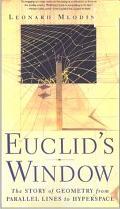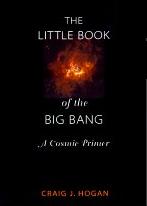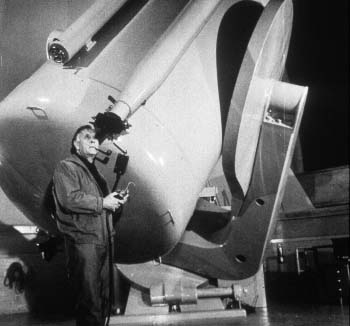Great Ideas in Science - Fall 2006
COURSE: BIOL 3018-001
TIME AND PLACE: 12:45-2:05 TR in Room 312 of Brown Hall
INSTRUCTORS:
Istvan Karsai and
Robert Gardner
OFFICE HOURS: Karsai: TBA, Gardner: 9:00-10:00 TR
OFFICES: Room 363 of Brown Hall (Karsai) and Room 308F of Gilbreath Hall (Gardner)
PHONE:
439-5601 (Karsai, 363 Brown), Department of Biological Sciences Office 439-4329 or 439-5321
439-6979 (Gardner, 308F Gilbreath), Math Department Office 439-4349.
E-MAILS:
karsai@etsu.edu and
gardnerr@etsu.edu.
WEBPAGES:
http://faculty.etsu.edu/karsai/ (Karsai) and
www.etsu.edu/math/gardner/gardner.htm (Gardner).
COURSE WEBPAGE:
http://www.etsu.edu/math/gardner/GIS/GISfall06.htm
SUPPLEMENTAL DOCUMENTS: Some documents are aviable on the BlackBoard site below (those of Dr. Karsai). Dr. Gardner has posted the following:
- Dr. Bob's Notes on the Sun, September 11, 2006. PDF and
PostScript.
- Simon Singh's Big Bang presentation. Listen to chapters 21 and 22 for the "Stairway to Heaven" message from Satan.
- A simulation of the Monty Hall Problem. After you play, click on "An Explanation" for some history. A more technical explanation is given at Ask Dr. Math about the Monty Hall Problem. A nice explanation with diagrams is given at www.montyhallproblem.com/. Dr. Bob's concise and crystal clear explanation (!) is now available in two formats: PDF and PostScript.
- Notes for the "Meaning of Mathematics" are available in PDF and PS formats.
- Notes on "Euclidean Geometry" are available in
PDF and PS formats.
- Notes on "NonEuclidean Geometry" are available in PDF and PS formats.
- Notes on "Infinity" are available in PDF and PS formats.
- Notes on Special Relativity (from Differential Geometry and Relativity Theory by Richard Faber):
- Chapter 2: Special Relativity: The Geometry of Flat Spacetime.
PDF.
PS.
- Section 2-1: Inertial Frames of Reference.
PDF.
PS.
- Section 2-2: The Michelson Morley Experiment.
PDF.
PS.
- Section 2-3: The Postulates of Relativity.
PDF.
PS.
- Section 2-4: Relativity of Simltaneity.
PDF.
PS.
- Section 2-5: Coordinates.
PDF.
PS.
- Section 2-6: Invariance of the Interval.
PDF.
PS.
- Section 2-7: The Lorentz Transformation.
PDF.
PS.
- Section 2-8: Spacetime Diagrams.
PDF.
PS.
- Section 2-9: Lorentz Geometry.
PDF.
PS.
- Section 2-10: The Twin Paradox.
PDF.
PS.
- Section 2-11: Temporal order and Causality.
PDF.
PS.
- General Relativity and Black Holes reference: "Relativity and Black Holes" planetarium show.
BLACKBOARD RESOURCES:
Dr. Karsai's PowerPoint presentations are available through BlackBoard. You can log onto BlackBoard
here. Your username is your "z-name."
ASSIGNMENTS:
- Assignment 1: See the BlackBoard site for details on the epistemology assignment.
- Assignment 2: A description of Assignment 2 (on math in our society) is available in PDF and PS formats.
- Assignment 3: A descriptions of Assignment 3 (on physics and astronomy) is available in PDF and PS formats. This is a version revised from that handed out in class!
LAB ASSIGNMENTS: If you are registered for the lab section of this class (BIOL 3038), then the following lab instructions are online:
- "A Statistical Analysis of the Behavior of Drivers on the ETSU Campus at 4-Way Stops," instructions in PDF and PS.
- "Hubble's Law Lab," instructions in PDF and PS.
THE SUPPLEMENTAL TEXTS

How to Think About Weird Things: Critical Thinking for a New Age by T. Schick and L. Vaughn
|

Euclid's Window: The Story of Geometry from Parallel Lines to Hyperspace, by L. Mlodinow.
|

The Little Book of the Big Bang: A Cosmic Primer, by Craig Hogan and M. Rees.
(Click on the image to go to the Amazon.com page for this book.)
|

I Robot, by Isaac Asimov.
|
I. EPISTEMOLOGY
How do we know what we think we know? We will distinguish methods of acquiring knowledge in science from methods used in non-science disciplines. We will read and discuss a book about critical thinking. Pairs of students (scientist and non-scientist) will investigate particular controversial subjects, question faculty experts to clarify their understanding of concepts and issues, and then present to the class their written analysis (500 word) and oral "disputes."
Shick and Vaughan: How to think about Weird Things, McGraw Hill.
|
| DATE |
TOPIC |
ASSIGNMENT |
| TUE 8/29 |
Introduction |
- |
| THR 8/31 |
EPISTEMOLOGY: Science as a way of knowing. |
- |
| TUE 9/5 |
Science as a way of knowing |
- |
| THR 9/7 |
Science-Psuedoscience Class Discussion 1 and choice of topics for pairs presentations |
Read Book |
| TUE 9/12 |
Science-Psuedoscience Class Discussion 2 |
Read Book |
| THR 9/14 |
Ask an Expert: Mark Harker |
- |
| TUE 9/19 |
Dispute Presentations |
- |
| THR 9/21 |
Dispute Presentations |
- |
| TUE 9/26 |
Dispute Presentations, Creation of Math/Geometry Groups |
- |
II. GEOMETRY AND MATHEMATICAL SPACES
What is "dimension" and how can space be curved? We will look at the history of geometry from the time of Euclid to the early 20th century. We will discuss flat geometric spaces ("vector spaces") and their curved siblings which are called "manifolds." One manifold of special interest will be the flat manifold of Einstein's special relativity. Groups of three or four students will investigate selected topics of general interest to see how geometric concepts have found their way into popular culture (such as science fiction). Each group will present to the class both a written (1000 word) and an oral (30 minutes) report.
L. Mlodinow: Euclid's Window: The Story of Geometry from Parallel Lines to Hyperspace, Touchstone Books.
|
| DATE |
TOPIC |
ASSIGNMENT |
| THR 9/28 |
The Meaning of Math and Euclidean Geometry |
Read Euclid's Window pp. ix-49 |
| TUE 10/3 |
Euclidean Geometry (cont.), NonEuclidean Geometry |
Read Euclid's Window pp. 53-92 |
| THR 10/5 |
NonEuclidean Geometry (cont.) |
Read Euclid's Window pp. 95-149 |
| TUE 10/10 |
Infinity and the Continuum |
Read Euclid's Window pp. 153-192 |
| THR 10/12 |
Infinity (cont.) and Class Discussion |
- |
| TUE 10/17 |
Fall Break Holiday |
- |
| THR 10/19 |
Ask an expert: Michel Helfgott |
- |
| TUE 10/24 |
Presentations |
- |
| THR 10/26 |
Presentations |
- |
| TUE 10/31 |
Presentations, Creation of Cosmology/Astronomy Groups |
- |
III. RELATIVITY AND THE UNIVERSE
What do we think we know about the universe in which we live? We will discuss how we know the size of the universe and the distance to cosmic objects. The structure of the universe from planets and asteroids to superclusters of galaxies will be explained. In general relativity, we will bend Einstein's flat space-time by introducing gravity. This will have implications for such exotic topics as black holes and the big bang. Empirical evidence will be discussed. Groups of two or three students will consider some topic from physics or astonomy to discuss the science of the topic or to see how it is represented (or misrepresented) in popular culture (such as science fiction). Each group will present to the class both a written (750 word) and an oral (15 minutes) report.
Hogan and Rees: The Little Book of the Big Bang: A Cosmic Primer, Springer.
|
| DATE |
TOPIC |
ASSIGNMENT |
| THR 11/2 |
Special Relativity |
Read Little Book Chapters 1-5 |
| TUE 11/7 |
General Relativity and Black Holes |
Read Little Book Chapters 6 and 7 |
| THR 11/9 |
The Structure of the Universe (ETSU Planetarium) |
Read Euclid's Window pp. 193-214 and Little Book Chapter 8 |
| TUE 11/14 |
Strings, Superstrings; Discussion |
Read Euclid's Window pp. 217-265 and Little Book Chapter 9 |
| THR 11/16 |
Ask an expert: Mark Giroux |
- |
| TUE 11/21 |
Presentations |
- |
| THR 11/23 |
Thanksgiving Holiday |
- |
| TUE 11/28 |
Presentations |
- |
| THR 11/30 |
Presentations |
- |
IV. SCIENCE IN LITERATURE
Each student will choose a book (nonfiction) in which scientific concepts play a prominent role, read that book, and provide a written (500 word) summary and a 3 minute oral comment addressing how well scientific concepts are used by the author(s). The entire class will read and discuss one influential science fiction book, I Robot by Isaac Asimov.
Isaac Asimov: I Robot, reprint 1991.
|
| DATE |
TOPIC |
ASSIGNMENT |
| TUE 12/5 |
3 Minute Book Reports by Students |
- |
| THR 12/7 |
Class Discussion of Asimov's I Robot |
- |
Return to
Bob Gardner's home page








